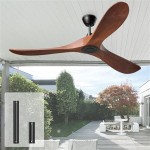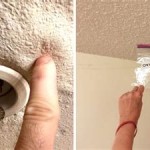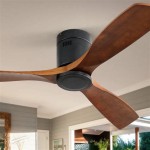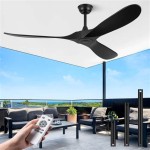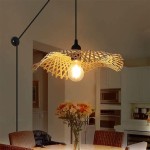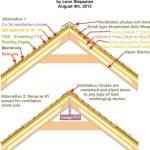Plug-In Ceiling Fans With Remote: A Comprehensive Guide
Plug-in ceiling fans with remote controls represent a convenient alternative to traditional hardwired ceiling fans. Their primary advantage lies in their ease of installation, requiring no professional electrical work. This makes them suitable for renters, homeowners who are hesitant to modify existing wiring, or anyone seeking a temporary cooling solution. This article provides a detailed exploration of plug-in ceiling fans with remote controls, covering their functionality, installation, common features, and important considerations.
Understanding the Concept of Plug-In Ceiling Fans
Unlike standard ceiling fans which require direct wiring into a building's electrical system, plug-in ceiling fans are designed to draw power from a standard electrical outlet. This is achieved through an attached power cord that terminates in a standard plug. The fan’s motor and lighting (if present) are powered through this cord. The remote control functionality allows for adjustment of fan speed, light intensity (where applicable), and on/off operation from a distance, enhancing user convenience.
The basic components of a plug-in ceiling fan include the fan blades, motor, housing, downrod (the extension pole connecting the fan to the mounting bracket), a mounting bracket, a power cord with a plug, and a remote control with a receiver. The receiver is typically integrated within the fan's housing and communicates with the remote to control the fan's functions.
The fundamental principle behind their operation is similar to any other electric motor-driven device. Electricity flows through the motor, causing it to rotate. This rotation drives the fan blades, creating airflow and a cooling effect. The remote control sends signals to the receiver, which then adjusts the motor's speed based on the user's input. For models with integrated lighting, the remote also controls the light source’s on/off status and, in some cases, dimming level.
The primary advantage of a plug-in ceiling fan is the simplified installation. Removing the need for hardwiring reduces the complexity and time required for setup. This also makes them ideal for spaces where hardwiring is not feasible or permissible, such as rental properties or temporary structures. However, the reliance on a readily accessible electrical outlet is a limitation that must be considered during installation planning.
Installation Process: Step-by-Step Instructions
Installing a plug-in ceiling fan, while less complex than a hardwired model, still requires careful attention to safety and proper procedures. The following steps outline a typical installation process:
1. Safety First: Before commencing installation, always turn off the power at the circuit breaker to the outlet you will be using. This prevents electric shock during the installation process. Double-check with a voltage tester to ensure the outlet is indeed de-energized.
2. Mounting Bracket Installation: The mounting bracket is the foundation for the entire fan. It is typically attached to a ceiling joist using screws. Identifying a suitable joist is crucial for ensuring the fan's stability. A stud finder can be used to locate the joists. Ensure the bracket is securely fastened to the joist to prevent the fan from falling.
3. Fan Assembly: Assemble the fan according to the manufacturer's instructions. This usually involves attaching the fan blades to the motor housing and connecting the downrod. Ensure all screws and bolts are tightened securely to prevent wobbling or vibration during operation.
4. Hanging the Fan: Carefully lift the assembled fan and hang it onto the mounting bracket. The design of the bracket usually allows for a temporary hanging position, freeing up your hands to make the electrical connections and secure the fan permanently. Ensure the fan is properly seated on the bracket before releasing it.
5. Plug-In and Secure Wiring: Plug the fan’s power cord into the electrical outlet. Ensure the cord is not strained or pinched. Secure the cord along the downrod or ceiling using clips or ties to prevent it from dangling and creating a tripping hazard. This step is crucial for aesthetic appeal as well as safety.
6. Remote Control Setup: Install batteries in the remote control. Some models may require synchronization between the remote and the receiver. Consult the manufacturer's instructions for the specific synchronization procedure. Test all the functions of the remote, including fan speed control, light control (if applicable), and on/off operation.
7. Final Check: Once the installation is complete, visually inspect the fan to ensure all components are securely attached and the power cord is properly routed. Turn on the power at the circuit breaker and re-test all functions of the fan.
While this process is generally straightforward, it is essential to consult the specific installation manual provided by the fan manufacturer. The instructions may vary slightly depending on the model and design of the fan. If you are uncomfortable with any aspect of the installation, it is advisable to seek assistance from a qualified electrician.
Key Features and Considerations When Choosing a Plug-In Ceiling Fan
Selecting the right plug-in ceiling fan involves considering several factors to ensure optimal performance, safety, and aesthetic appeal. Some key features and considerations include:
Fan Size and Blade Span: The size of the fan should be appropriate for the room size. Larger rooms require fans with a greater blade span to effectively circulate air. Smaller rooms require smaller fans to avoid overwhelming the space and creating excessive airflow. A general guideline is to use a fan with a blade span of 42-44 inches for rooms up to 100 square feet, 52 inches for rooms up to 400 square feet, and larger sizes for even bigger areas. The height of the ceiling should also be considered when choosing the downrod length.
Motor Type and Efficiency: The motor is the heart of the fan, and its quality directly impacts the fan's performance and energy efficiency. Look for fans with energy-efficient motors, such as DC motors, which consume less power than traditional AC motors. A more efficient motor translates to lower electricity bills and reduced environmental impact. The motor's noise level is also a consideration, especially for bedrooms or quiet spaces. Some motors are designed to operate more quietly than others.
Remote Control Functionality: The remote control should offer intuitive and comprehensive control over the fan's functions. Features such as multiple fan speed settings, light dimming (if applicable), reverse function (for seasonal use), and timer settings can enhance user convenience. The range of the remote control should also be adequate for the size of the room. Some remotes also feature wall mounts for convenient storage.
Design and Aesthetics: Ceiling fans come in a variety of designs, from traditional to modern, to complement different interior styles. Consider the fan's finish, blade design, and overall aesthetic to ensure it blends seamlessly with the room's decor. The fan should enhance the room's appearance, not detract from it. The lighting fixture (if present) should also be considered in terms of style and light output.
Safety Certifications: Ensure the fan is certified by recognized safety organizations such as UL (Underwriters Laboratories) or ETL (Electrical Testing Laboratories). These certifications indicate that the fan has been tested and meets safety standards. This is particularly important for preventing electrical hazards and ensuring the fan's safe operation.
Warranty and Customer Support: A good warranty provides peace of mind and protection against defects or malfunctions. Check the length and terms of the warranty before purchasing. Reliable customer support is also essential in case you encounter any problems with the fan after installation. A reputable brand will typically offer better warranty and support services.
Outlet Location and Cord Management: The placement of the electrical outlet is a key consideration. The fan needs to be positioned in a location that is both aesthetically pleasing and allows for easy access to the outlet without creating a dangling or unsightly power cord. Managing the power cord is crucial for both safety and appearance. Using cord clips or ties to secure the cord along the downrod or ceiling can help prevent tripping hazards and maintain a clean look.
Weight Considerations: Evaluate the weight of the fan and ensure the ceiling joist is capable of supporting it. An overly heavy fan can pose a safety risk if the joist is not strong enough. If the joist is questionable, consider reinforcing it before installing the fan. The mounting bracket should also be designed to safely support the fan's weight.
Thoroughly researching and carefully considering these factors will help you choose a plug-in ceiling fan that meets your specific needs and provides years of reliable and convenient cooling.

Bell Howell 15 7 In Indoor White Ceiling Fan With Remote Led Light Socket 8563encbqh

Home Decorators Collection Calthorpe 20 In Indoor Outdoor Wet Rated Portable Brushed Nickel Ceiling Fan Yg682 Bn

Harbor Breeze Gaskin 24 In Matte Black Integrated Led Indoor Outdoor Ceiling Fan With Light 6 Blade Gat24mbk6lod At Lowes Com

Pacific Core 20 In Smart Indoor Outdoor Black Plug Chandelier Ceiling Fan With Dimmable Led Lights For Patio Hdsat 6938 01

Canarm Cp56d11pn White 56 Ceiling Fan

1 Piece Screw In Ceiling Fan Light Socket E26 30w Dimmable Small With Plug Bulb

Plug Remote Appliance Management Table Fan Controller Ceiling Control Suitable For Lamps And Fans

Hinnixy 42 In Outdoor Black Waterproof Ceiling Fan With Lights And Remote Control 3cct 6 Speeds Plug Fans F Lx42bk 1d01hd The Home

Universal Ceiling Fan Mount For Plug In Hunter

Yardreeze 29 In Flush Mount White With Blades Plug Ceiling Fan Light And Remote 5 Blade The Fans Department At Lowes Com
Related Posts
